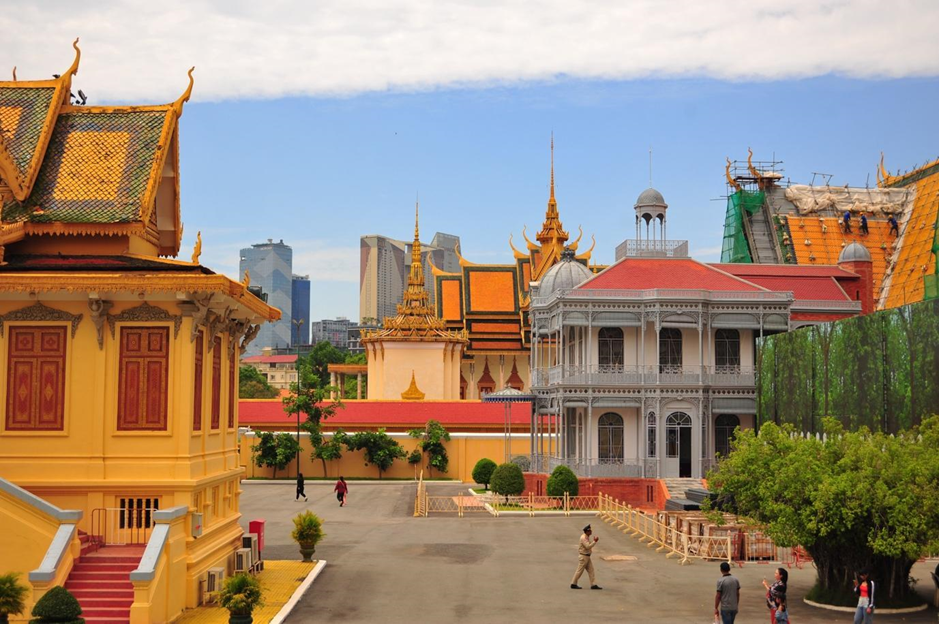Cambodia & Tradition: All you need to know about the Royal Sacred Ploughing Ceremony
- Editorial team

- May 15
- 3 min read
The King, the government and the people of Cambodia are deeply committed to the Royal Sacred Ploughing Ceremony, to be held in Kampong Chhnang province on May 15, to ensure the best possible agricultural season for the country's food crops.

This year, His Majesty King Norodom Sihamoni, while presiding over the ceremony, will delegate the execution of the symbolic ploughing to the leaders of the host province.
The Governor of Kampong Chhnang province, H.E. Sun Sovannarith, will be the King's representative, called “Sdach Meak”, and his wife, H.E. Phat Sophanny, will be the Queen's representative, called Preah Mehua, to lead the plowing, then let the royal oxen used eat seven golden trays loaded with rice, corn, sesame seeds, beans, grass, water and wine.
The Royal Sacred Ploughing ceremony is an ancient and sacred tradition that heralds the start of the rice-growing season. It is deeply rooted in the cultural and spiritual fabric of Southeast Asia, particularly Thailand and Cambodia.
This venerable rite, observed every year in May, is a profound tribute to agriculture, symbolizing the blessing of the earth and the hope of an abundant harvest.
The ceremony, whose origins date back over a millennium, combines Brahmanic, Hindu, Buddhist and animist elements, reflecting the rich syncretism of the region's spiritual heritage.
In Cambodia, the ritual - known locally as Pithi Chrat Preah Neangkol - dates back to the Angkorian era and is said to have been introduced from India in the first century by King Kordin through a royal marriage. Designed to honor fertility gods such as Shiva and Vishnu, it evolved over the centuries to incorporate Buddhist blessings.

The ceremony takes the form of a grand procession involving the king or his representative, high-ranking officials and traditionally-dressed participants.
An intriguing and unique aspect of the ceremony is the divination performed by the royal oxen. After ploughing, the oxen are offered seven items - rice, corn, sesame seeds, beans, grass, water and wine or liquor - each representing different agricultural and economic omens.

The choices made by the oxen are interpreted as predicting the year's agricultural conditions: for example, the choice of water and grass heralds sufficient water reserves and abundant food, while the choice of liquor signals good business prospects.
The ceremony also includes a blessing phase during which Buddhist monks chant prayers to invoke divine favor on the seeds, oxen and participants, reinforcing the sacred spiritual character of the event.
Beyond its agricultural significance, the Royal Sacred Ploughing ceremony is a powerful cultural symbol. It reaffirms the monarch's bond with the land and the people, emphasizing the vital importance of agriculture as the backbone of the nation's economy and livelihood.
In essence, the Royal Sacred Ploughing ceremony is a majestic blend of ritual, symbolism and royal patronage - a timeless tradition that honors the land, celebrates the farmer's toil and blesses the promise of a fruitful season to come.
Mr. Moeun, a farmer from Kampong Chhnang, is looking forward to the event in his home province. He is convinced that if the royal oxen eat plenty of rice and corn, farmers will be able to produce in abundance.
A farmer from the province, Mrs. Sok Mean, said that this belief has been passed down from generation to generation and has proved to be absolutely correct. While the Royal Ploughing Ceremony is an opportunity to see and hear directly from the King and other dignitaries, it reminds him that this is the right time to cultivate the land and encourages him to choose the right crops.
The ceremony will also include an exhibition of a wide range of agricultural products and local crafts, as well as photo galleries of major agricultural achievements.
With AKP







Comments